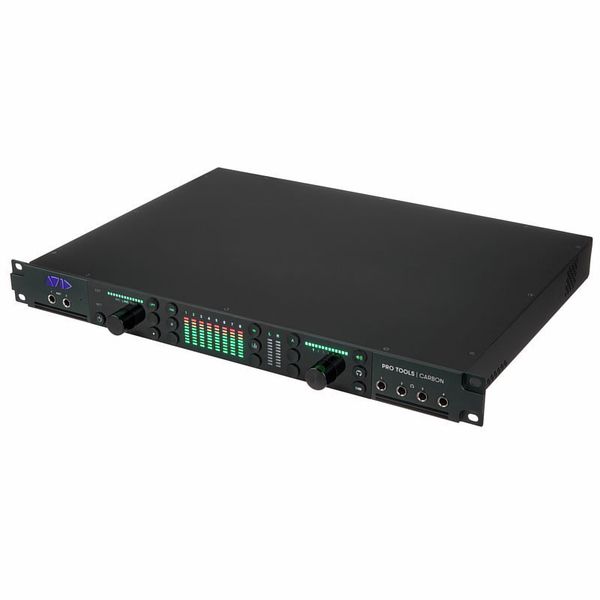

Starting with Carbon, it does have considerably more inputs and outputs. There is a bit more to what is considered an “input or output.” When we say Carbon has 25 inputs and 34 outputs, that doesn’t necessarily mean that there is a standard 1/4″ or XLR jack for each. *More inputs and outputs (possible 25in x 34out) as opposed to Apollo’s (possible 16in x 22out).(4) headphone outputs (instead of Apollo’s two).Footswitch port for Talkback mic or monitor switching.(2) Unbalanced 1/4′ TS ports on the frontĪpollo has only two things I wish Carbon had: a pad and a high-pass filter for each preamp.Ĭarbon’s list of features continues with:.(1) 1/4′ Monitor / Main out for your speakers.(2) ports for ADAT expansion with Word Clock.(8) channels of D-Sub line output (two pairs of which can be extra monitor outputs).Optional ALT D-Sub line inputs (these bypass the preamps and instead let you use your personal outboard gear.Variable Impedance mic preamps (ports 5-8 on Carbon).(8) channels of their custom-designed preamps.While the Apollo x8p has a decent look, I feel like it still has that “early 2000s” Motu look going. Advantage – Carbon in the looks department. In fact, both units are laid out very similarly.

Tale of the TapeĬarbon directly contends against the most feature-rich Apollo interface, matching blow for blow the x8p’s bells and whistles. Avid has entered the fight with Carbon, and they’ve come out swinging. Except for a few other brands, Universal Audio had no contenders and ran off with the lion’s share of users.
#Protool carbon series#
Meanwhile, Universal Audio’s Apollo series has been the “belle of the ball” for beginners and pros alike with its entire lineup of interfaces that remove some of the heat off of your CPU. HD Native was only a means to get an HD I/O in your workflow, but the responsibility of processing was all on you.

Sure, they have the gold standard of DSP systems with HDX, but they never released a non-card-based interface that could take the load off your computer. With its years of experience in onboard DSP processing, Avid suited up for battle in an area they had skirted for years – the prosumer DSP-based interface market. Occam’s razor can only deduce that Avid found itself outside of an untapped market, one that another company has dominated for a very long time. And I’m not sure any interface at this price point is a guaranteed “cash grab” for a company.Larger studios lean heavily on HDX’s onboard DSP for massive sessions. There’s no way the HDX ecosystem is going anywhere.Avid has swapped the Native PCI card for the thunderbolt interface.If you were anything like me around release day, you met the announcement with a bit of head-scratching.Īs far as I can see, the answer to these questions is mostly a resounding “no.” We’ve hung onto it for the better part of the year and can definitively answer the question most of you have probably been asking: “What exactly IS Carbon?” So Many Questions Luckily, Avid asked if I wanted to give Carbon a spin, and I jumped at the opportunity. But you can’t help but feel you’re missing out. I didn’t necessarily regret buying my other interface – I like it very much (B.
#Protool carbon pro#
However, right after I purchased my new interface, Carbon did come out, and I quickly felt the “ I bought a Macbook Pro 31 days before Apple announced the new models” feeling. Their MBox line was toast, along with the Digi “Double O” models. The reason I didn’t buy an Avid interface, you ask? Because other than Avid’s HDX system, they didn’t have much to choose from. It was time for a change, so I bought a new interface, and for the first time since my MBox 1 in 2002, Avid / Digidesign didn’t make it. There were no real issues with Native only the desire to move away from a card-based interface and bulky, noisy PCIe chassis. I sold off roughly 60% of my gear and decided it was time for a “do-over.” Part of the gear that got the ax was my Avid HD Native system. About a year and a half ago, I got the itch.


 0 kommentar(er)
0 kommentar(er)
